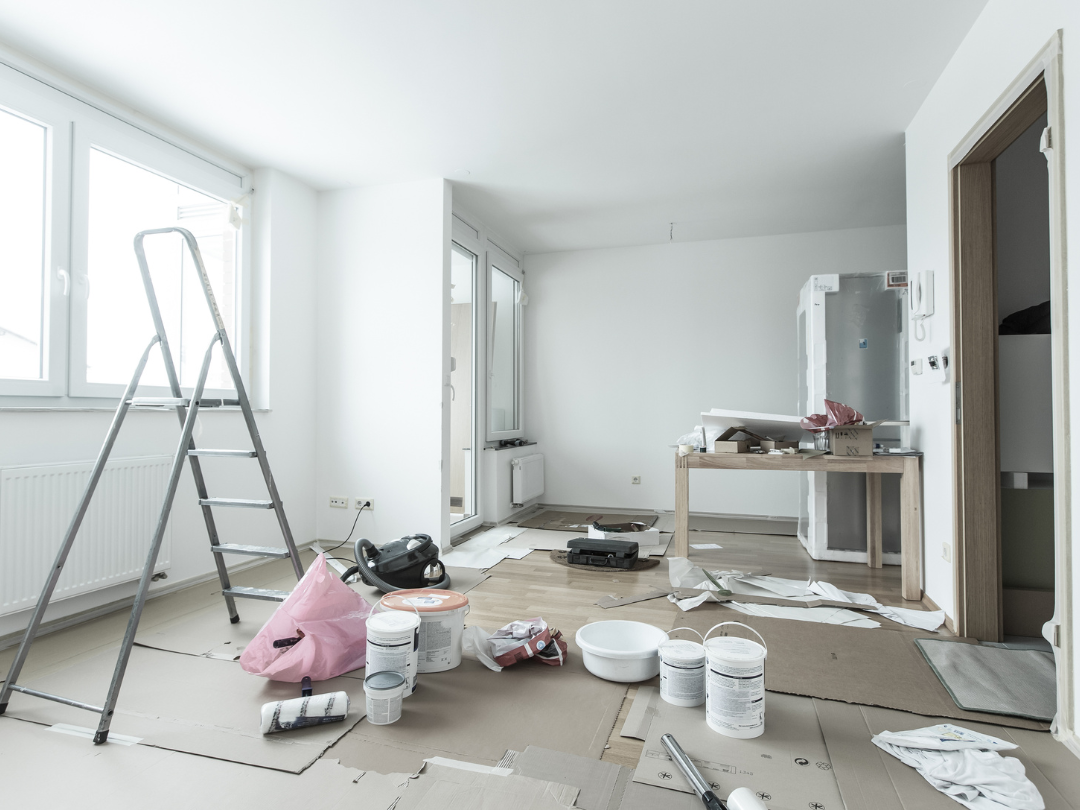Get the week's most popular posts delivered to your inbox.
Our weekly update is free yet priceless and you're less than a minute away from getting the current edition.
In the unlikely event we disappoint, you can unsubscribe with a single click!
Last Updated on September 12, 2025 by teamobn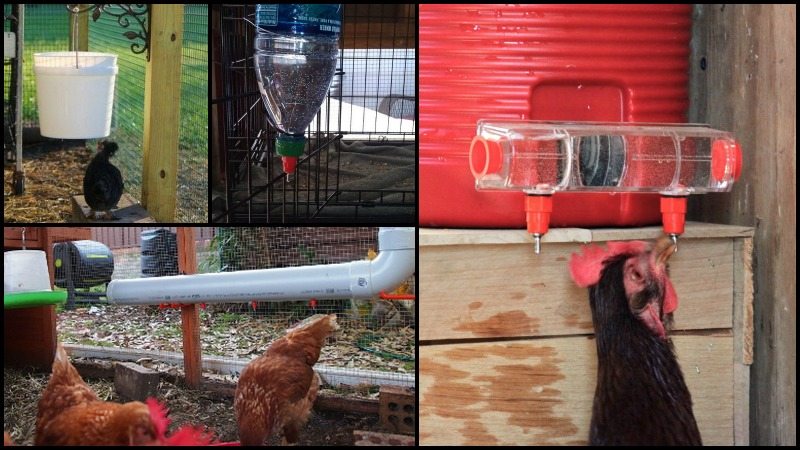
Lots of people will attest to the enjoyment of raising chickens, yet the majority of us seek to simplify the process. Managing the coop, along with ensuring the provision of clean food and water, can often present a notable challenge.
Anything that can solve the usual concerns regarding backyard chickens is welcome and we’ve previously featured a great chicken feeder. Now it’s time for the chicken water station!
These ideas will help keep the chooks’ water and home clean. You’ll never have to worry about overturned water containers or your chickens contaminating their drinking water again. This project will help you make your chooks happy and healthy.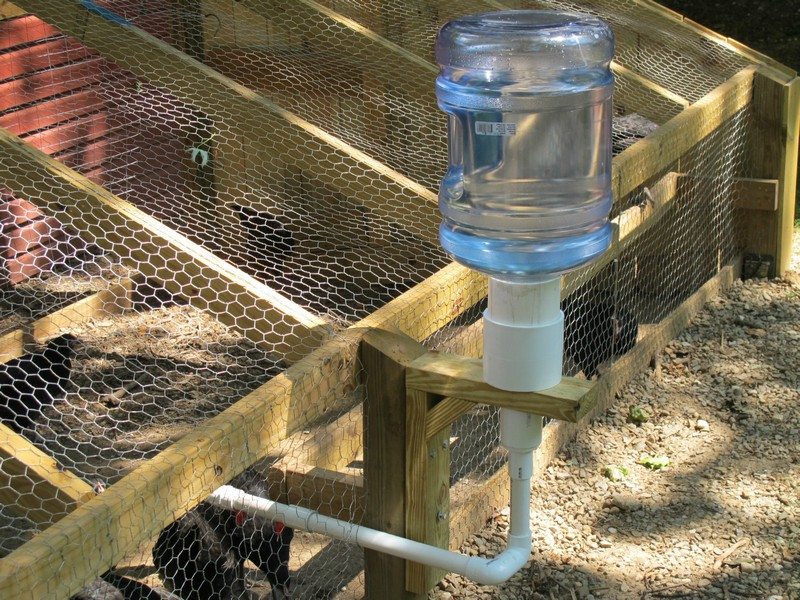
Most of what you’ll see here are easy DIY projects and use inexpensive or repurposed items.
If you know another great idea we missed including in the list, please feel free to share it with us through the comment box below!
Click on any image to start the lightbox display. Use your Esc key to close the lightbox. You can also view the images as a slideshow if you prefer. 🙂
Chicken Water Station Ideas

PVC Chicken Water Station
PVC pipes are not only readily accessible but also budget-friendly, making them a practical choice for creating a chicken water station. When you opt for PVC pipes as your chicken’s water source, you streamline the process, saving both time and effort.
Additionally, the water remains clean and uncontaminated, addressing a key concern for poultry health. These advantages underscore the benefits of employing PVC pipes as a chicken water station for your coop.
Their durability and affordability also make them a practical choice, while their capacity to provide a constant and clean water source addresses a fundamental need for poultry. By selecting PVC pipes for your chicken water station, you ensure the well-being of your chickens and poultry care routine efficiency.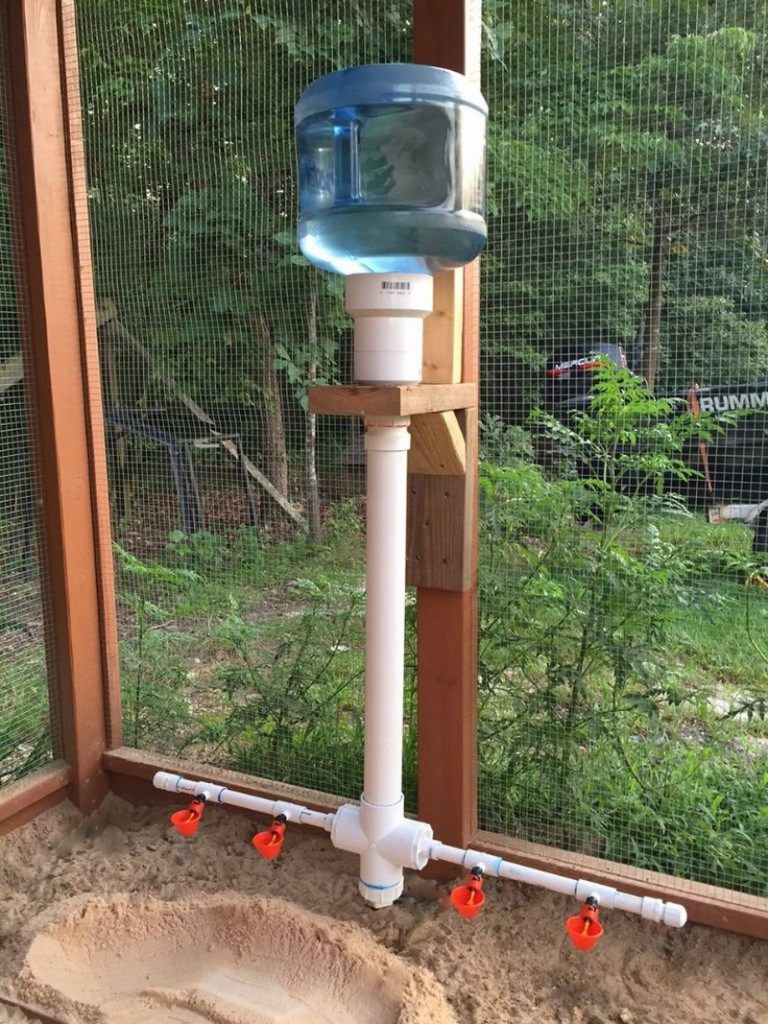

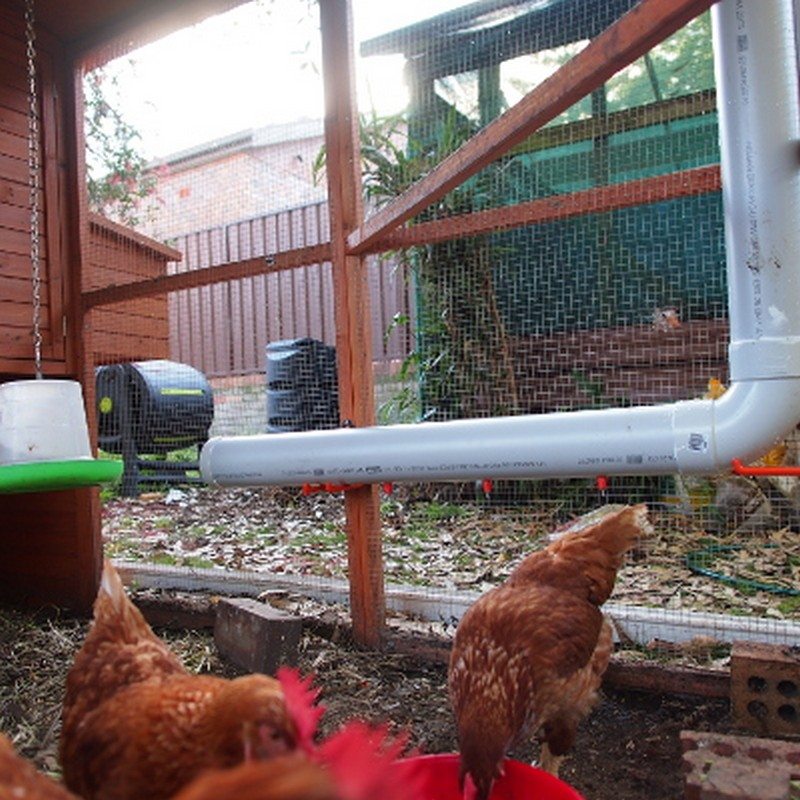
Plastic Drum Container With Watering Nipples
When it comes to watering your chickens, you have many options. Some people use a self-watering waterer, others use a simple dish or a jar, and others just put a pan of water outside. There is one option that may not have occurred to them and you, a plastic drum container with watering nipples.
The drum is made from high-quality High-Density Polyethylene (HDPE) food-grade plastic and is translucent so you can see the level of water. The drum has a sealing cap that can be sealed by water pressure, and a watering nipple for the chooks to drink water.
The drum possesses robust construction and is conveniently portable. Its capacity can vary depending on its size, accommodating as much as 35 gallons of water.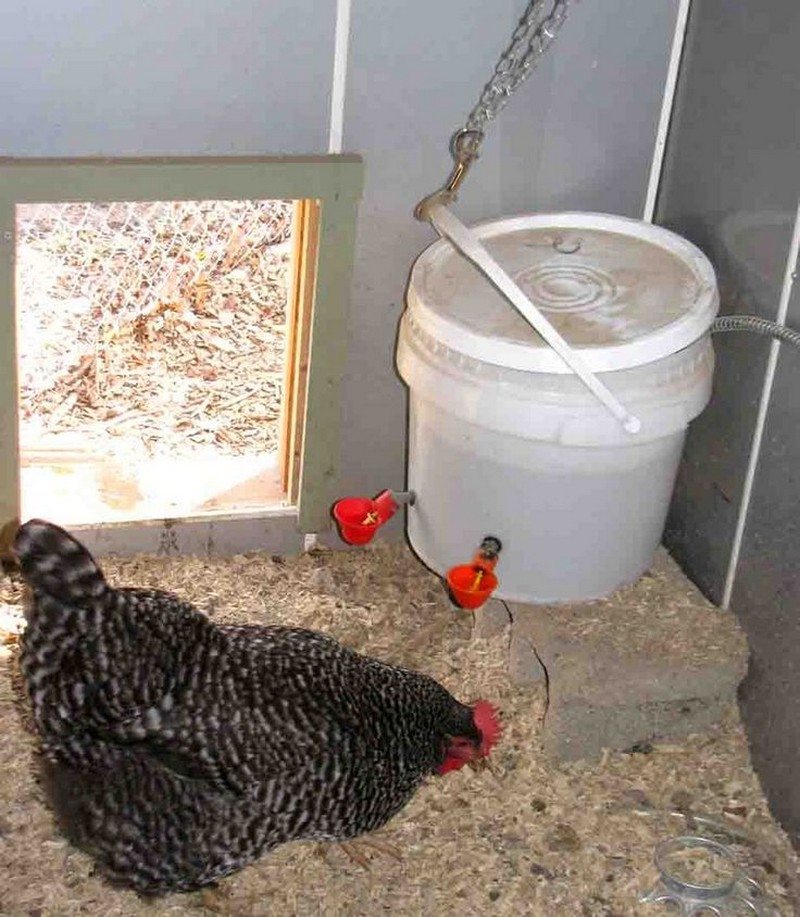
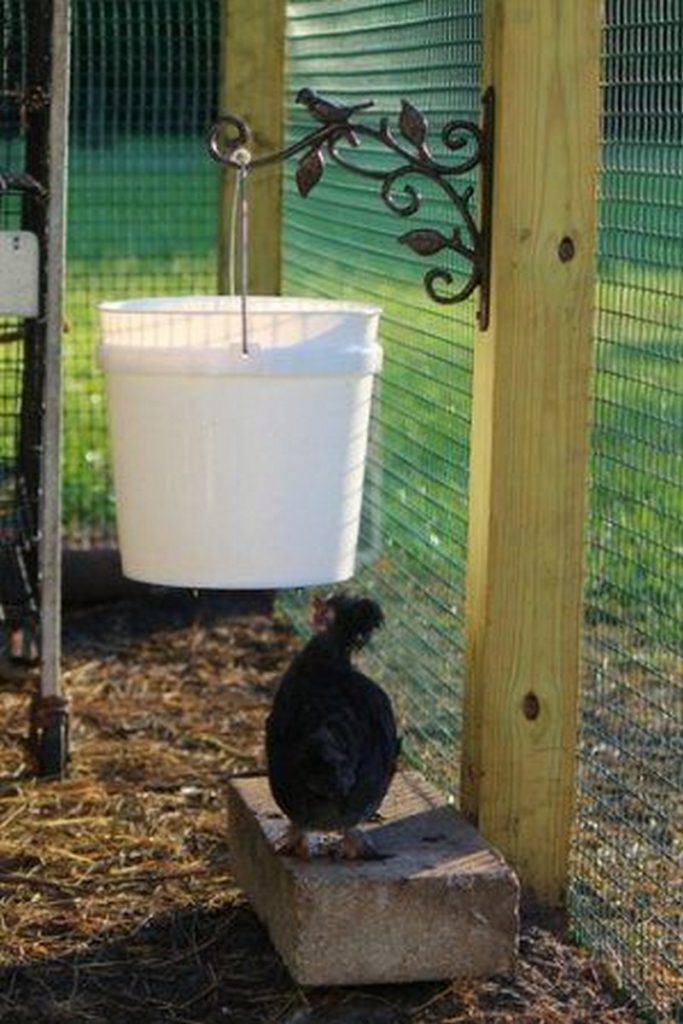
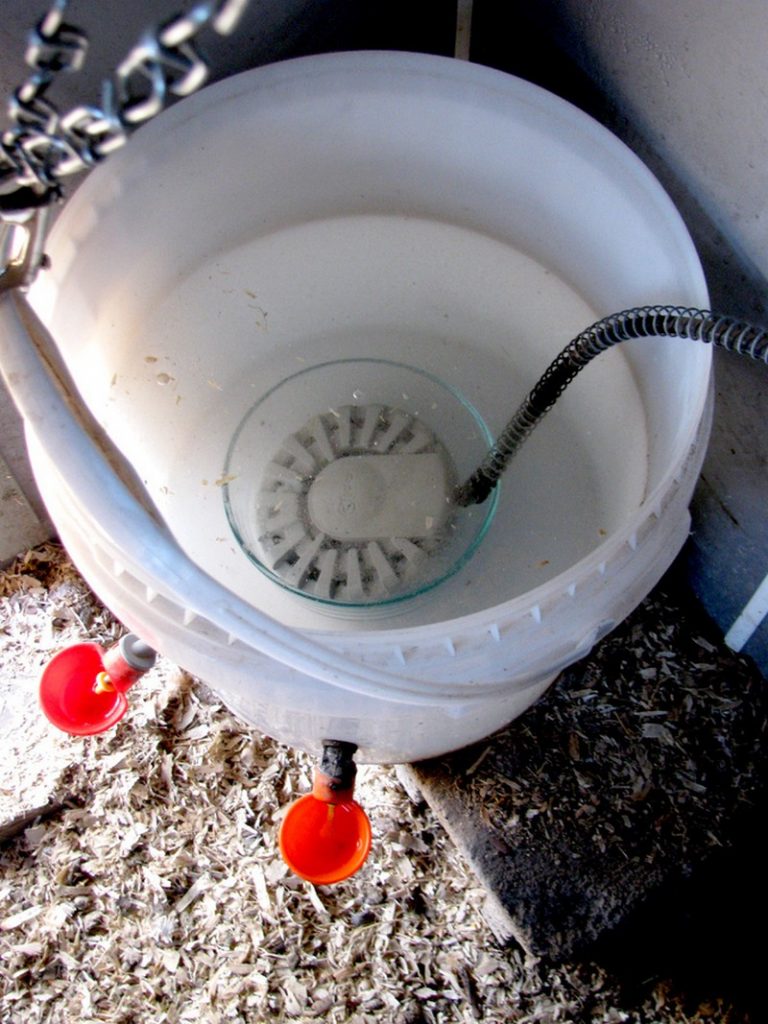
Gallon Bucket on an Oil Pan or Plant Base
As the name aptly suggests, a Gallon Bucket on an Oil Pan is exactly what it sounds like – it involves placing one or even two-gallon buckets atop an oil pan. These buckets are typically positioned with precision, often by securing them using a few strategically drilled bolts that pass through the base of the bucket and into the surface of the oil pan.
This clever and practical setup serves as a functional and cost-effective solution for various applications, making efficient use of available materials.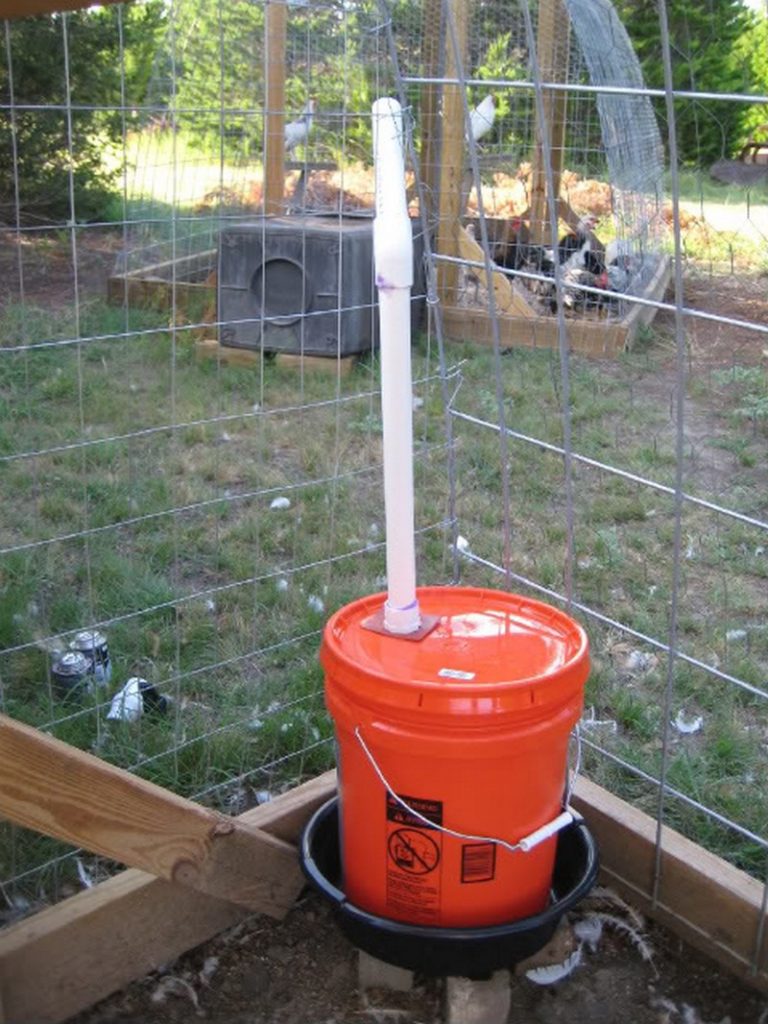
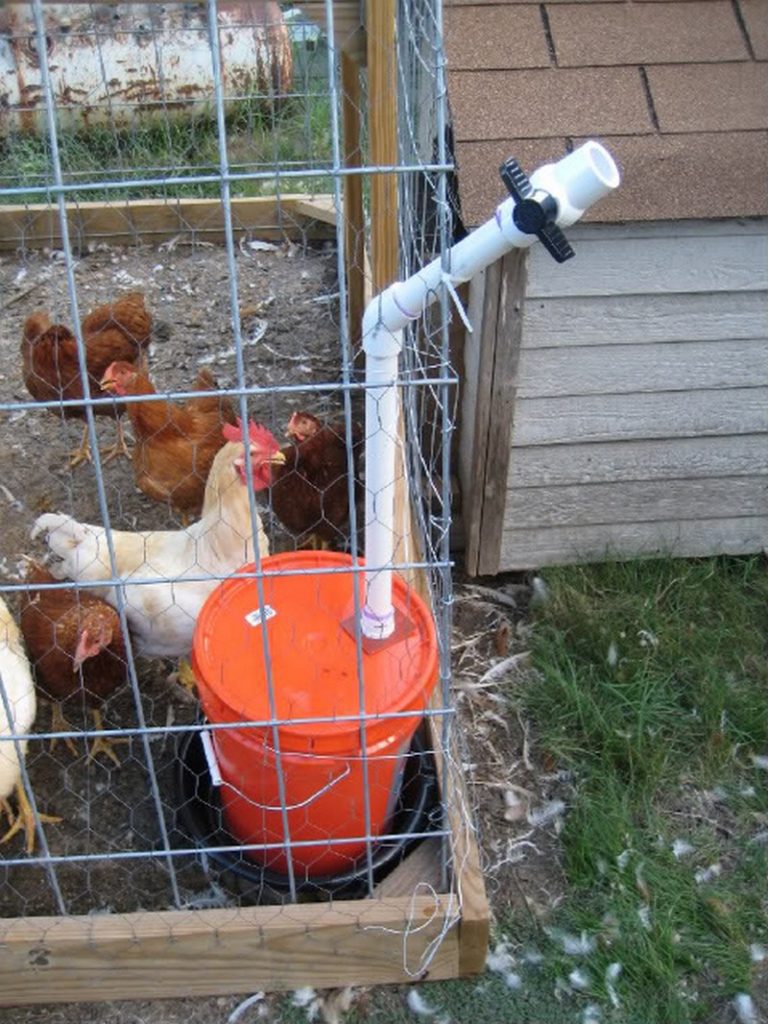
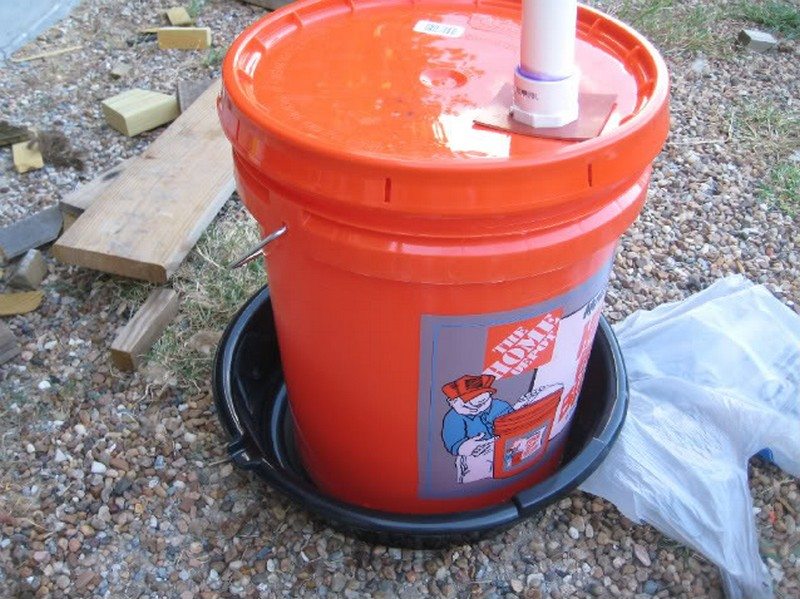
Cooler Chicken Water Station
The water cooler stands out as an excellent method for ensuring your chickens remain adequately hydrated. This waterer is thoughtfully constructed from robust materials, designed to withstand the rigors of various weather conditions.
With its generous capacity, it can store ample water to keep your feathered friends hydrated for extended periods, reducing the need for frequent refills. Such durability and convenience make it an ideal choice for chicken keepers of all levels, ensuring that there’s always access to a reliable and plentiful water source.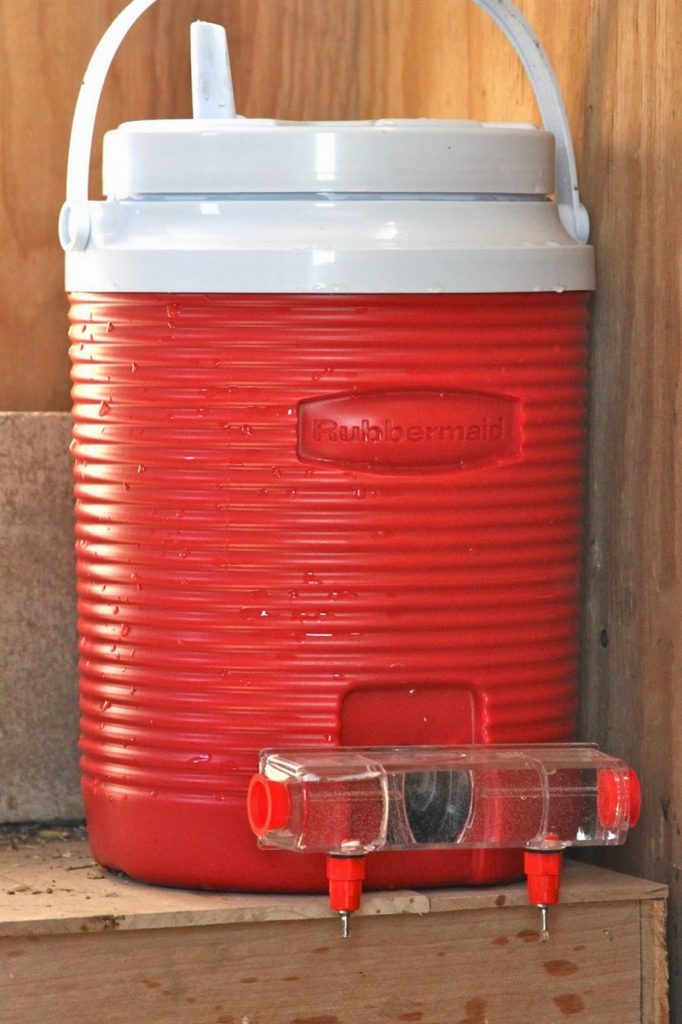
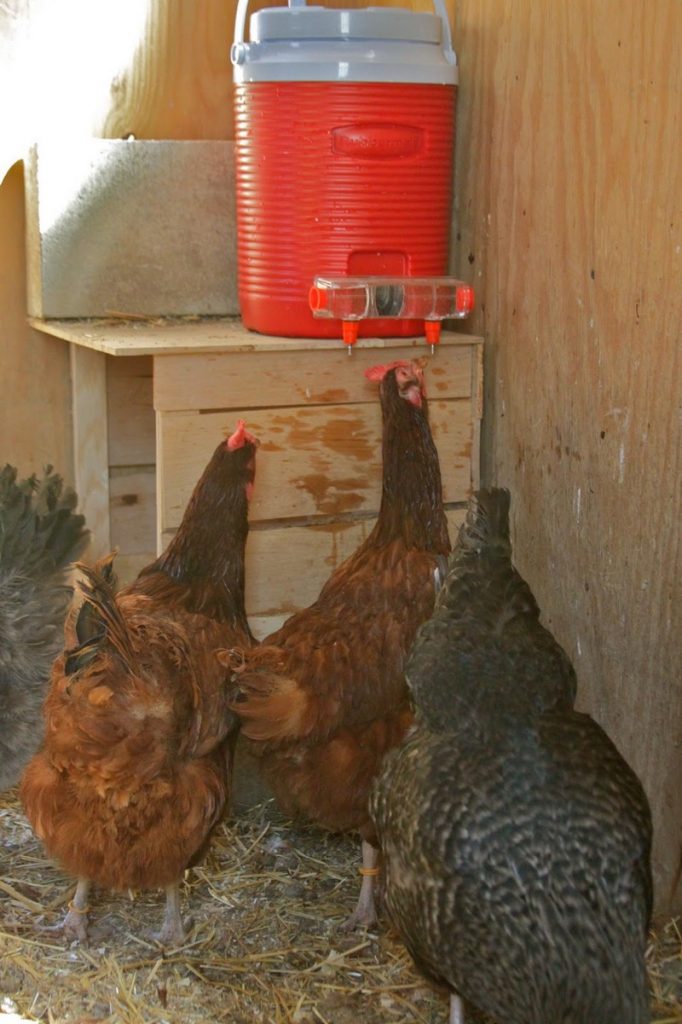

Plastic Bottle With Watering Nipple
What looks to be an ordinary plastic soda bottle can actually be a high-tech chicken water station. Just stick a water nipple on the top of a soda bottle, pour in some water, flip it over, and make sure it’s locked in the cage. The water will drip out and your chickens can quench their thirst straight from the bottle.
The bottle will last for months, so it’s a better long-term solution than other waterers that need to be replaced often. Plus, you don’t need to spend extra money on them as they are available at hand.
You don’t only have a waterer, but you were able to help reuse those supposed trash soda bottles.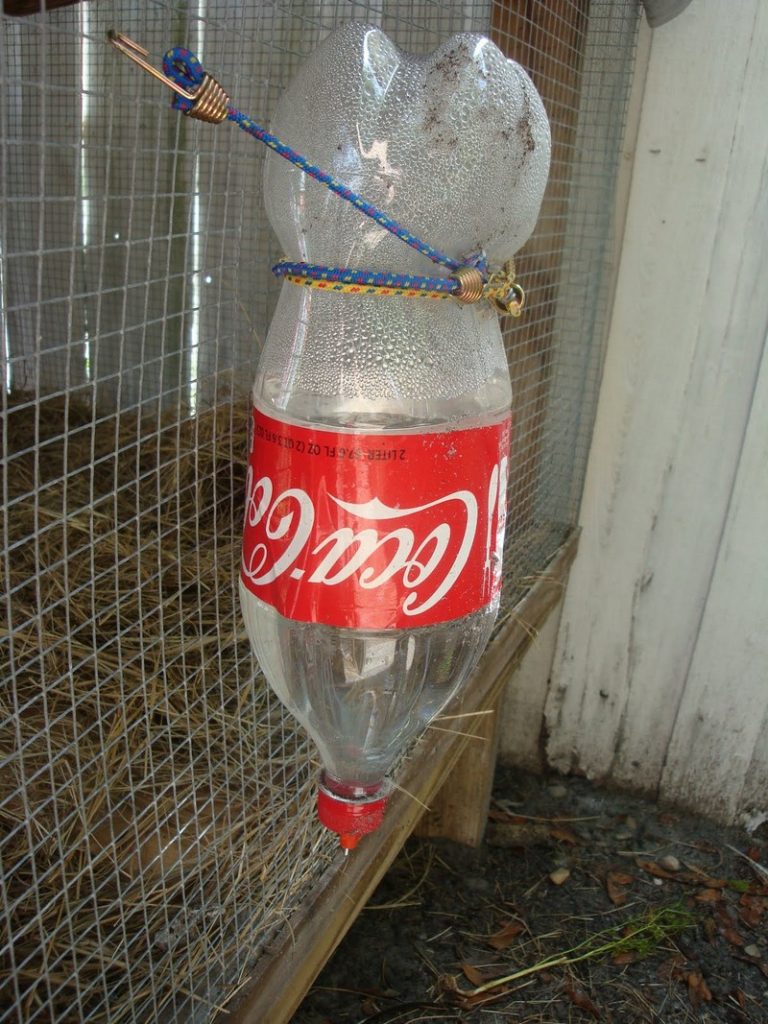
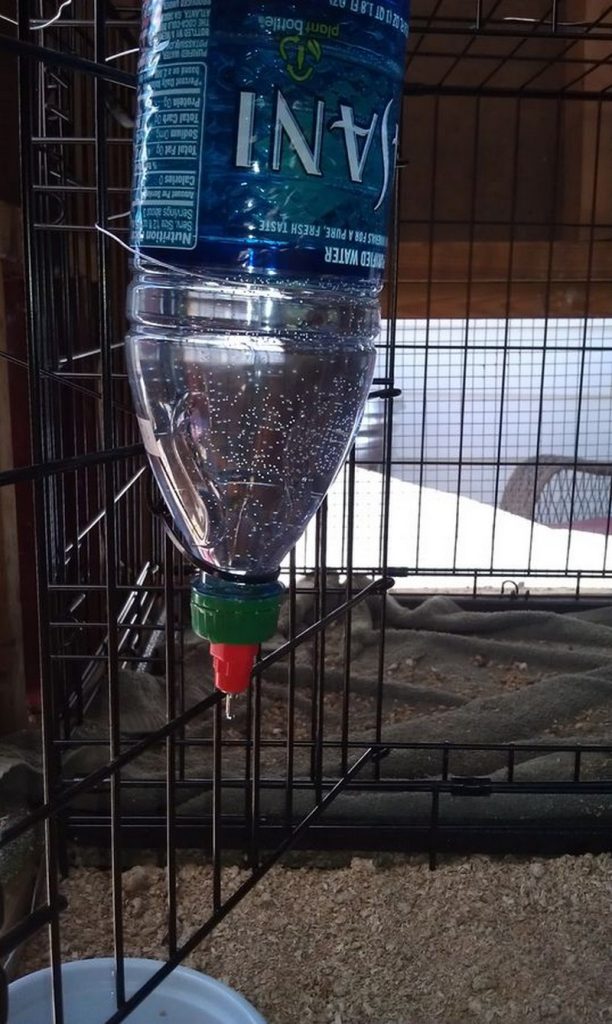
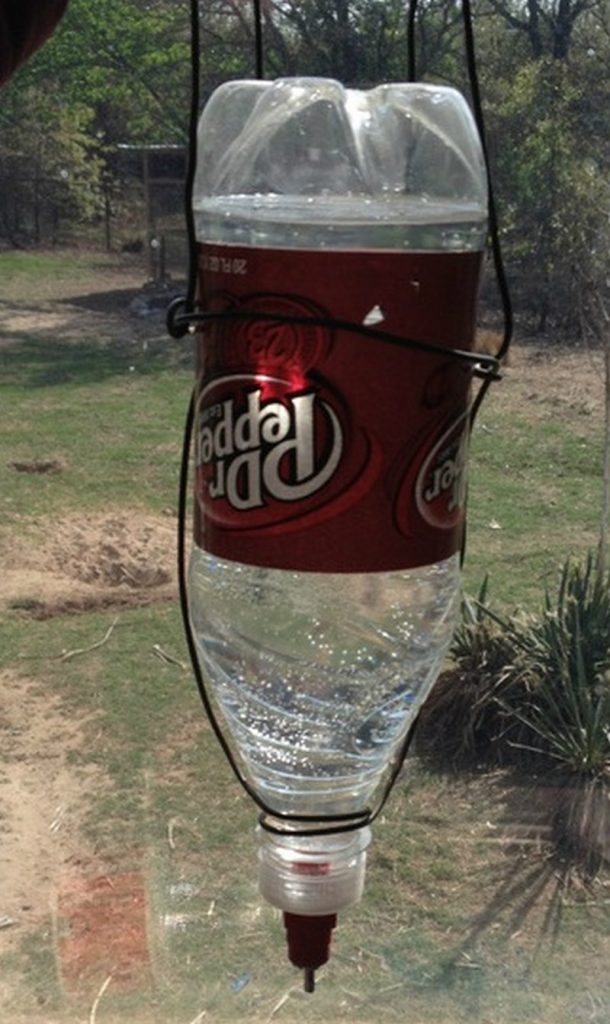
Water Pipes, Basin, Plywood Cover
Or you can simply assemble a good waterer by using water pipes, a basin, plywood, and of course a water nipple. Check out the picture below for your reference.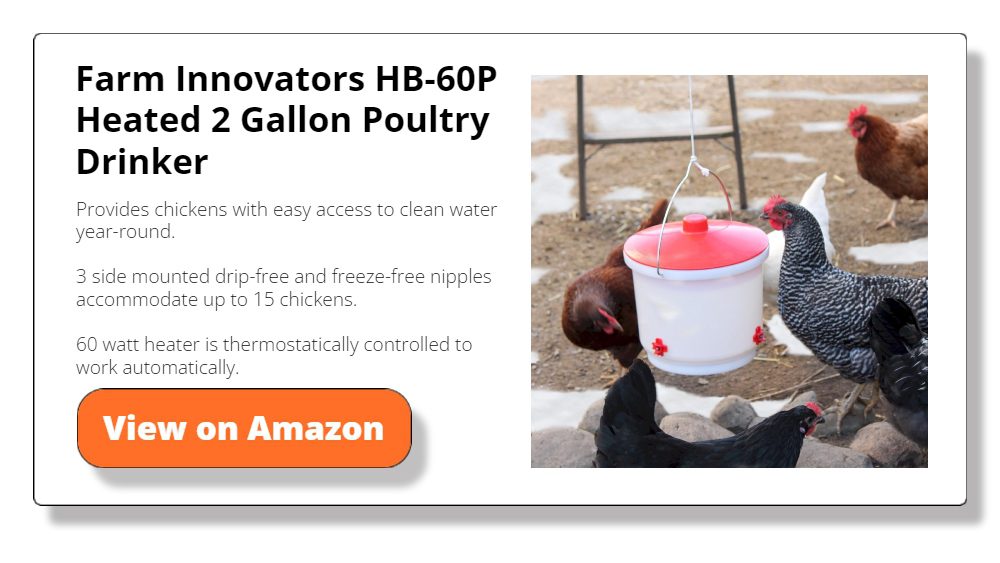
Just make sure to utilize quality water pipes. To prevent your chickens from perching directly on these pipes, which could lead to damage, it’s advisable to shield them with a layer of plywood. This safeguard not only preserves the integrity of the pipes but also maintains a consistent and efficient water supply system for your poultry.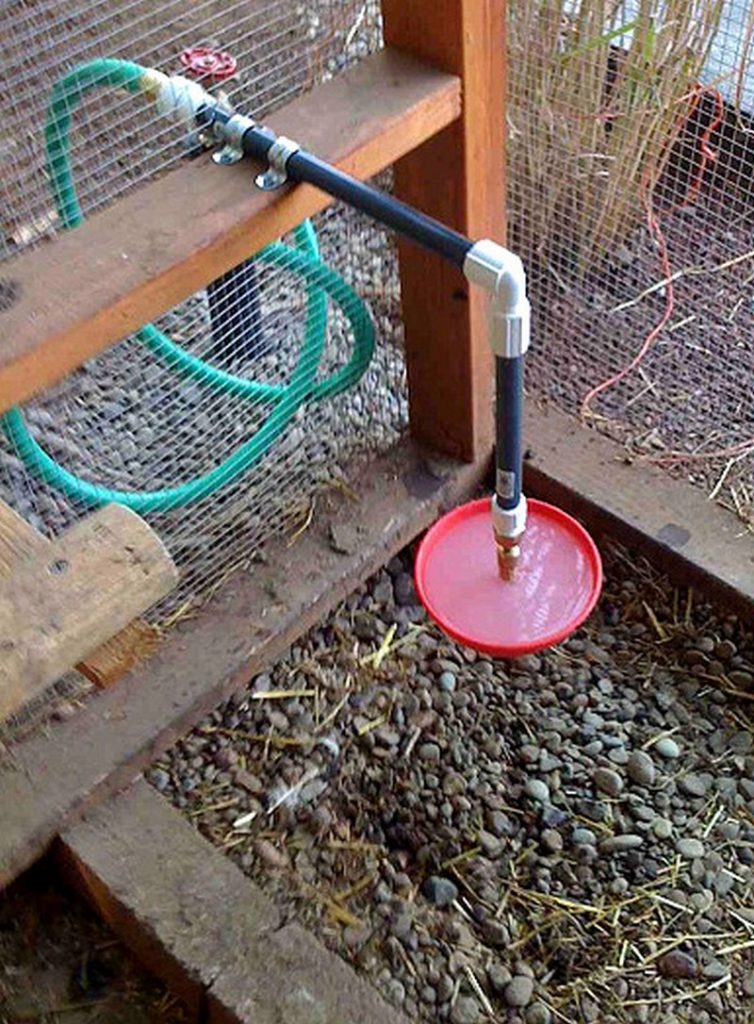
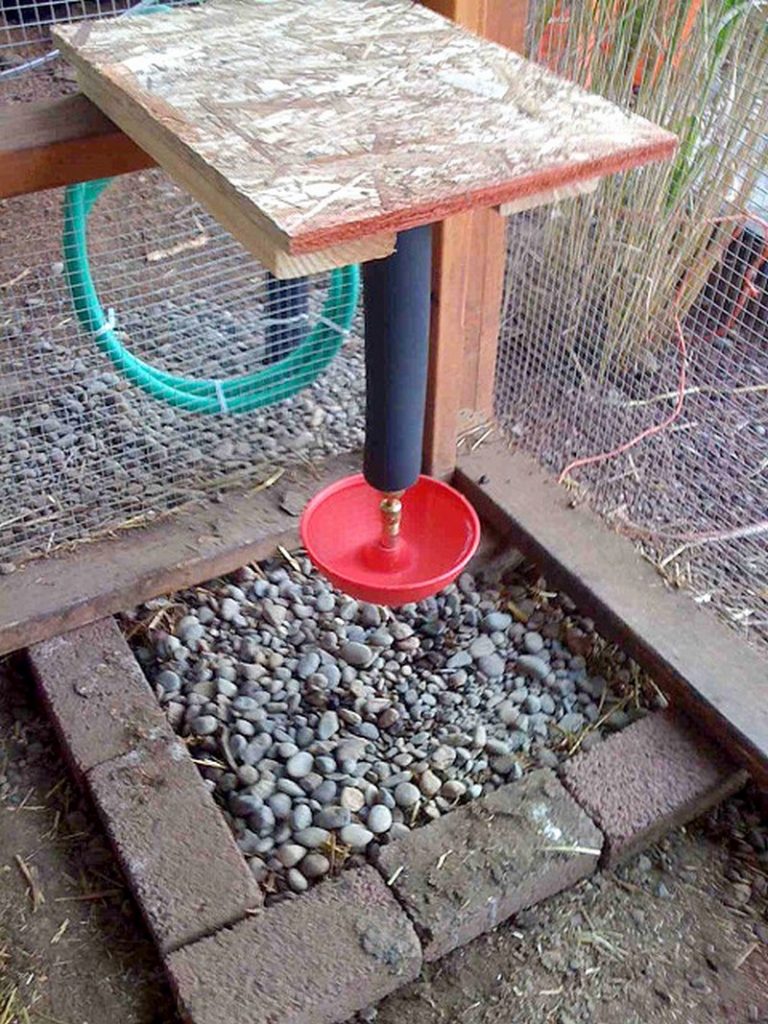
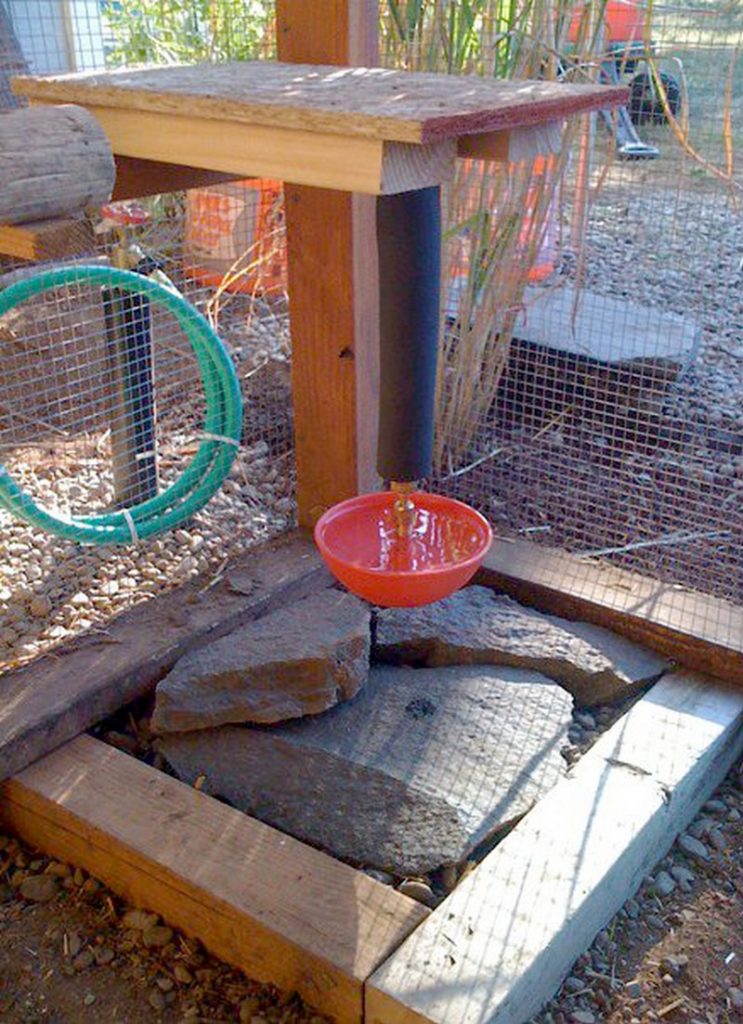
Hydration Haven
Quenching your flock’s thirst just got a whole lot more interesting with these six innovative chicken water station ideas. From the ingenious PVC pipe waterers that ensure a constant supply of fresh water to the protective plywood covers that safeguard your water pipes, these innovative solutions bring to the table a dual advantage.
They not only quench your chickens’ thirst effectively but also bring a touch of simplicity to your daily poultry care regimen. With these solutions in place, you can focus more on enjoying your flock’s company and less on the logistics of providing them with essential hydration. It’s a win-win scenario that elevates both your poultry-keeping experience and the welfare of your feathered friends.
Whether you’re a seasoned poultry enthusiast or just starting out, these ideas provide functional and resourceful ways to ensure your feathered friends always have access to fresh, clean water. Keep your flock happily hydrated, and upgrade your chicken coop with these clever water solutions!
Ready to take the step towards improved hydration for your chickens? Watch your coop flourish with health and vitality!
Looking to build a chicken coop but don’t want to spend a fortune? Check out our free chicken coop plans here…
Health and Hygiene Tips for Water Stations
Keeping your backyard flock healthy means making sure your chicken water station is safe and clean. Fresh water is essential to chickens, and any contamination can cause health problems very fast. These are some vital pointers to maintain the safety and hygiene of your chicken water station.
Regular Cleaning Schedule
Make time to clean your chicken water station on a regular basis. At least once a week is a good idea to clean the water containers; if you see obvious dirt or algae, increasing the frequency. To get rid of any accumulation, give the insides of the containers a good brushing.
Use Safe Cleaning Agents
Instead of using harsh chemicals, which can be dangerous to your chickens, clean your chicken water station with vinegar or a light dish soap. To be sure no leftover cleaning solution that could be dangerous to your birds remains, give the containers a good rinse.
Refresh Water Daily
Always ensure the water in your chicken water station is fresh. Change the water daily to prevent the buildup of slime and mold, which are common in stagnant water. Fresh water is essential to prevent the spread of diseases among your chickens.
Prevent Contamination
Position your chicken water station in a location where it’s less likely to get contaminated by feed or waste. Elevating the water station can also help keep the water clean, as it discourages chickens from scratching dirt into it or perching on the edges.
Inspect and Repair
Regularly inspect your chicken water station for any cracks, leaks, or damage. Even small cracks can harbor bacteria and mold. Repair or replace damaged parts immediately to maintain the structural integrity of the water station and keep it hygienic.
Avoid Overcrowding
Ensure your chicken water station is accessible to all your chickens without overcrowding. Overcrowded conditions can lead to faster contamination of the water as more chickens interact with the station. Consider multiple stations if you have a large flock to keep the water clean longer.
Monitor Water Quality
Periodically test the water quality in your chicken water station. Look for changes in pH levels and the presence of harmful bacteria. Water testing kits are available at most pet supply stores and can provide insight into the health of your water source.
Shade and Shelter
Place your chicken water station in a shaded area to prevent algae growth, which thrives in sunlight. Additionally, a sheltered location protects the water from debris and droppings from wild birds, which can carry diseases.
Train Your Chickens
Trained to drink from nipple waterers or cups, which are made to lessen the amount of debris and droppings that enter the water than open basins, you may help your chickens maintain clean water.
Regular Updates
Keep up to date on new approaches and products for keeping water clean. The major goals of innovations in chicken water stations are usually to lower maintenance and enhance hygiene. Using fresh approaches can make your chicken coop far more health-secure.
By keeping your chicken water station a dependable and hygienic source of water, you may help to maintain their general health and productivity.
Conclusion
Creating a chicken water station is an easy approach to guarantee your chickens always have access to clean, fresh water. Applying these health and hygiene advice will support keeping your flock healthy and the water quality high. Your hens’ general health is improved and care is made easier with a well-maintained water station.
If you liked this, you will also like viewing these easy DIY projects…
Get the week's most popular posts delivered to your inbox.
Our weekly update is free yet priceless and you're less than a minute away from getting the current edition.
In the unlikely event we disappoint, you can unsubscribe with a single click!





